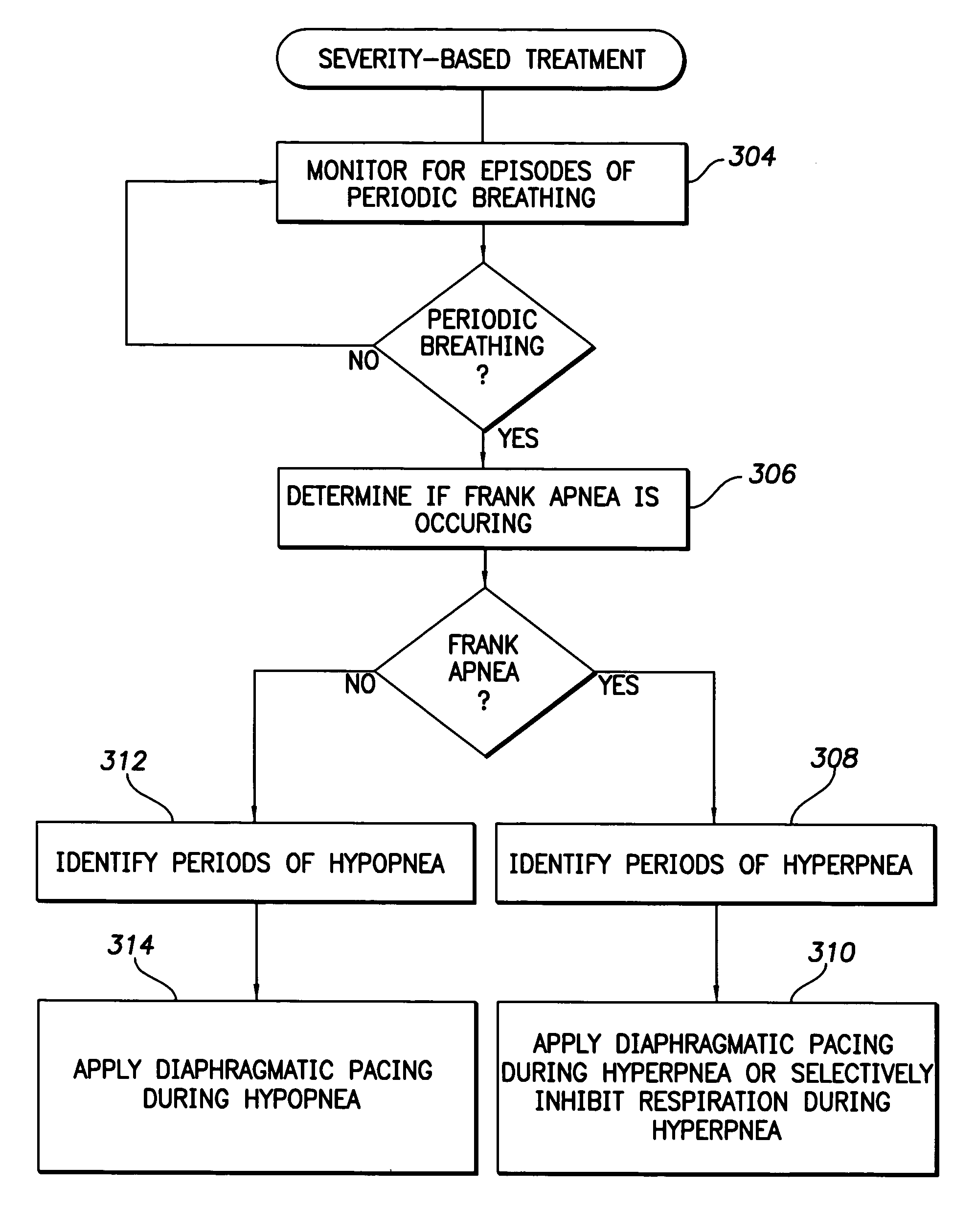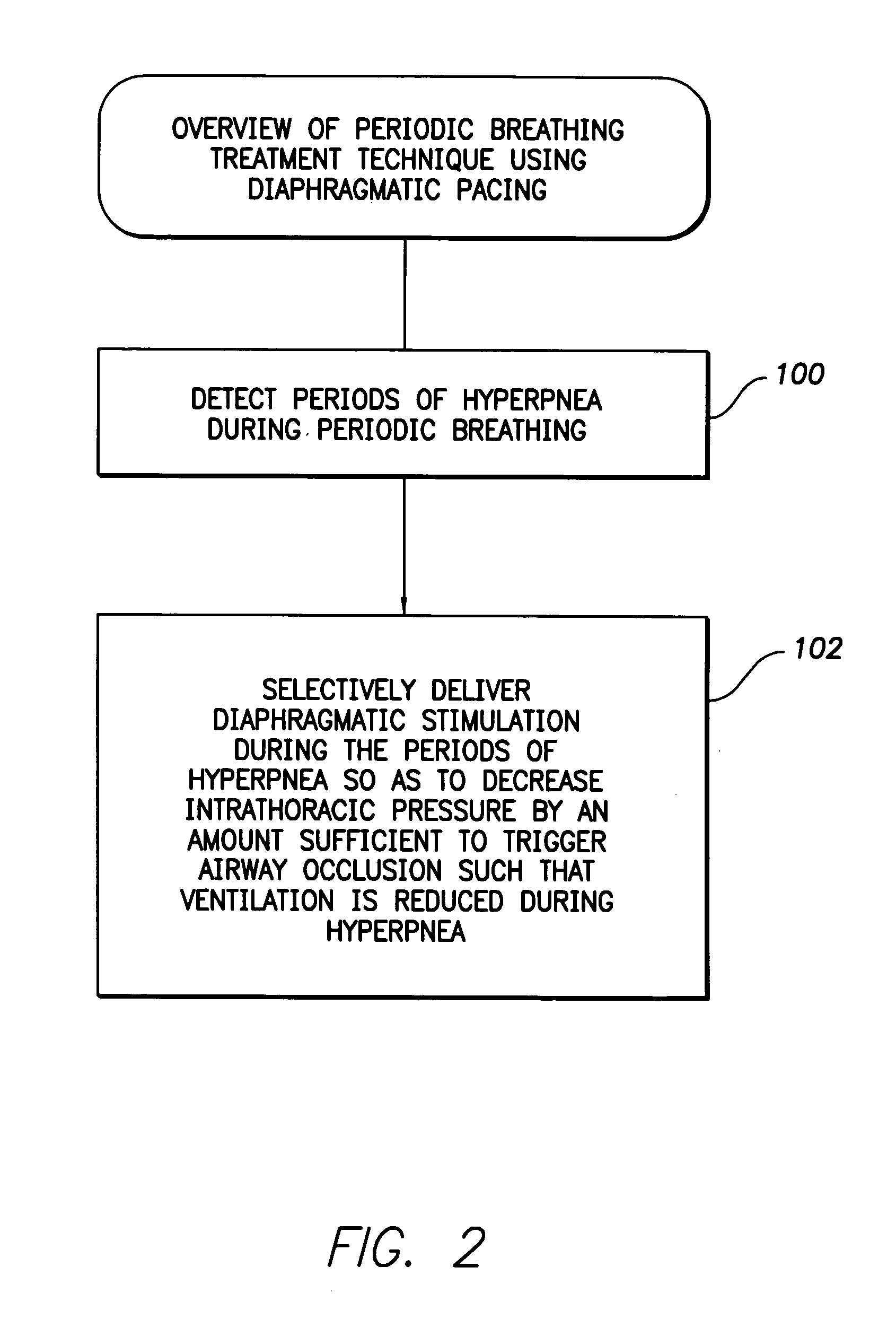System and method for applying therapy during hyperpnea phase of periodic breathing using an implantable medical device
a medical device and hyperpnea technology, applied in electrotherapy, therapy, etc., can solve the problems of poor cardiac function, poor blood flow to the brain, and cycle becoming increasingly unbalanced, so as to reduce the actual ventilation and reduce the cyclic blood chemistry imbalance
- Summary
- Abstract
- Description
- Claims
- Application Information
AI Technical Summary
Benefits of technology
Problems solved by technology
Method used
Image
Examples
Embodiment Construction
[0023]The following description includes the best mode presently contemplated. This description is not to be taken in a limiting sense but is made merely to describe general principles of the illustrative embodiments. The scope of the invention should be ascertained with reference to the issued claims. In the description that follows, like numerals or reference designators will be used to refer to like parts or elements throughout.
[0024]Overview of Implantable Periodic Breathing Treatment System
[0025]FIG. 1 illustrates an implantable periodic breathing treatment system 8 capable of detecting periodic breathing and delivering therapy in response thereto. Periodic breathing treatment system 8 includes a pacer / ICD 10 or other cardiac stimulation device that incorporates internal components (shown in FIG. 10) for detecting periodic breathing and controlling delivery of therapy. To this end, pacer / ICD 10 receives impedance signals from various cardiac pacing leads 12, only two of which a...
PUM
 Login to View More
Login to View More Abstract
Description
Claims
Application Information
 Login to View More
Login to View More - R&D
- Intellectual Property
- Life Sciences
- Materials
- Tech Scout
- Unparalleled Data Quality
- Higher Quality Content
- 60% Fewer Hallucinations
Browse by: Latest US Patents, China's latest patents, Technical Efficacy Thesaurus, Application Domain, Technology Topic, Popular Technical Reports.
© 2025 PatSnap. All rights reserved.Legal|Privacy policy|Modern Slavery Act Transparency Statement|Sitemap|About US| Contact US: help@patsnap.com



